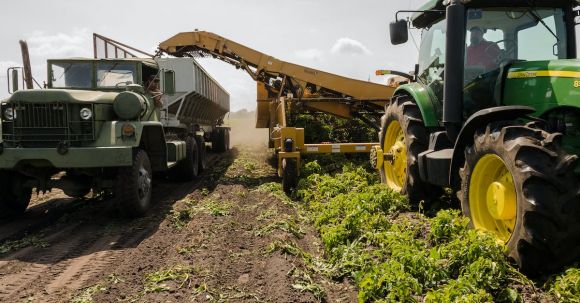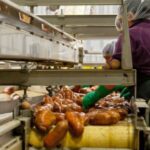The agricultural sector has undergone a massive transformation in recent years, thanks to the advancements in technology. In the UK, industries have been at the forefront of this revolution, leveraging innovative farming technologies to improve efficiency, sustainability, and productivity. From precision farming to smart irrigation systems, these technologies are reshaping the agricultural landscape and offering new opportunities for farmers.
Precision Farming: The Key to Optimized Agriculture
Precision farming is a game-changer for the agricultural industry. By utilizing advanced technologies such as GPS, drones, and sensors, farmers can precisely manage their crops and maximize yields. These technologies enable farmers to analyze soil conditions, monitor crop growth, and apply fertilizers and pesticides with pinpoint accuracy. With the help of data analytics, farmers can make data-driven decisions, leading to cost savings and increased productivity.
Smart Irrigation Systems: Saving Water and Boosting Crop Yield
Water scarcity is a pressing issue in agriculture, and smart irrigation systems are providing a solution. These systems use real-time data on soil moisture levels, weather conditions, and crop water requirements to optimize irrigation. By delivering water directly to the roots of the plants, smart irrigation systems reduce water wastage and ensure that crops receive the right amount of water at the right time. This not only conserves water but also improves crop yield and quality.
Vertical Farming: The Future of Sustainable Agriculture
Vertical farming is revolutionizing the way we grow crops by allowing farmers to produce food in vertical stacks, often in urban environments. This technology is particularly relevant in the UK, where land availability is limited. Vertical farms use artificial lighting, hydroponics, and climate control systems to create the perfect growing conditions for plants. By growing crops indoors, farmers can reduce water usage, eliminate the need for pesticides, and minimize transportation costs. Vertical farming offers a sustainable solution to food production, ensuring a consistent supply of fresh produce throughout the year.
Robotics and Automation: Enhancing Efficiency and Reducing Labor Costs
Robots and automation have become increasingly prevalent in agriculture, streamlining various tasks and reducing the labor-intensive nature of farming. Robots can perform activities such as seeding, planting, and harvesting with precision and efficiency. They can also gather data on crop health and growth patterns, enabling farmers to make informed decisions. Automation technologies, such as autonomous tractors and robotic milking systems, further enhance operational efficiency and reduce labor costs. By taking on repetitive and physically demanding tasks, robots and automation free up farmers’ time and resources.
Data Analytics: Unlocking Insights for Informed Decision-making
The abundance of data generated by farming technologies presents an opportunity for farmers to harness the power of data analytics. By analyzing data on weather patterns, soil conditions, crop growth, and market trends, farmers can gain valuable insights into their operations. Data analytics can help identify areas for improvement, optimize resource allocation, and predict crop yields. By making data-driven decisions, farmers can increase profitability, reduce waste, and mitigate risks.
Conclusion: Embracing the Future of Agriculture
The UK agricultural industry is embracing technological advancements to transform the way food is produced. Precision farming, smart irrigation systems, vertical farming, robotics, and data analytics are just a few examples of the innovative technologies revolutionizing agriculture. These technologies offer immense potential for increasing productivity, improving sustainability, and ensuring food security. As the industry continues to evolve, it is crucial for farmers to embrace these technologies and adapt to the changing landscape. By doing so, they can stay ahead of the curve and contribute to a more efficient and sustainable agricultural sector.





